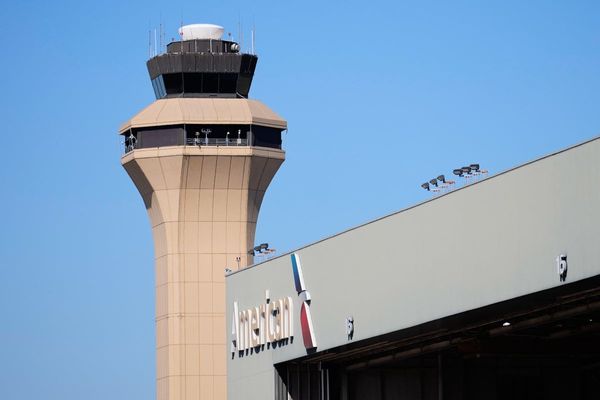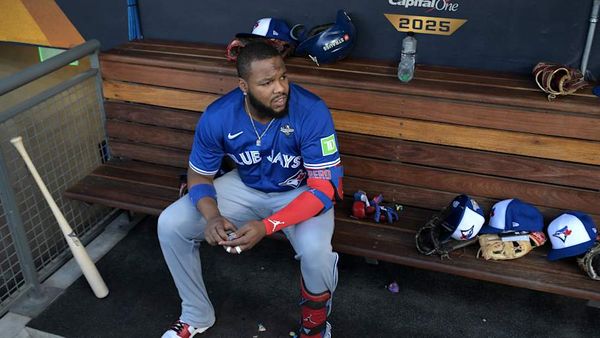
In August 1926, on the banks of the east Kimberley’s Forrest River, an Aboriginal deacon found a pile of charred bone fragments.
The Rev James Noble, famed for his tracking skills, had been sent to investigate whether Aboriginal residents of the Forrest River mission had been shot by the Western Australian police.
A young woman called Loorabane had turned up at the mission with a bullet wound in her leg and a terrifying story of escaping a police shooting that had killed her mother and dozens of others. She and her brother, Kangaloo, were seeking refuge.
Noble followed a series of horse tracks and footprints to a quiet, picturesque place called Gotegotemerrie, where he found a mound of ashy sand on the riverbank. Just 10 metres away was a deep hole covered by stones, where a large fire had been left to burn. He would later tell a royal commission it appeared to be a makeshift oven.

Noble had discovered just a fraction of the atrocities carried out by police constables Graham St Jack and Denis Regan, who led a posse of 13 police and civilians – with an arsenal of Winchester rifles, 500 to 600 rounds of ammunition, 42 horses and shotguns – to avenge the killing of a pastoralist, Frederick Hay, who had been killed by an Aboriginal man named Lumbia for the rape of his wife, Anguloo.
Noble’s efforts led to a police inquiry, which concluded that 16 people had been killed and their remains burned. A subsequent royal commission confirmed that at least 11 Aboriginal people had been killed and their remains burned in three purpose-built stone ovens.
Noble’s great-granddaughter Tabatha Saunders says she is proud to know he ensured their crimes were revealed to history.
“They thought they could hide the massacres, but my great-grandfather found the evidence,” she says. “I can’t even comprehend how he tried to understand or cope with this atrocity. What horrors must have been going through his mind as he walked along the sand that day?”
Saunders, a Badtjala and Bidjara woman based in Brisbane, learned of her great-grandfather’s harrowing discovery during an online search for her family history.
“I became aware of his involvement by accident. I was researching his life story because he had died in the early 1940s.”
Saunders was keenly aware of the atrocities committed against Aboriginal peoples during this period and had some prior knowledge of her great-grandfather’s presence at the Forrest River mission, but she had no idea what he had witnessed.
“I had read on certain websites, mostly theological, about a certain massacre at Forrest River and his involvement. I looked into it further and was surprised and horrified to discover that he was the tracker who discovered the [victims’] remains,” she said.
Saunders had always been told that her ancestors were survivors and this was clear, yet shocking proof.

“Imagine yourself walking into a place. You soon realise that there are bodily remains. You notice there are tiny bones. You realise they are the bones of infants. Then you realise there are the bones of adults. You see that those bones are all together and you realise they are the bones of mothers and babies. There are 30 to 40 remains. This is what my great-grandfather would have endured.
“The trauma – intergenerational trauma – is real,” she says. “We hear these stories about our mothers, grandmothers, great-grandmothers. This is still in living memory for us. It hurts.”
Working under the radar
Noble was known as a kind and proud man, and an excellent tracker and horseman. Born in Boulia, north Queensland, he worked as a stockman from a young age.
“He was well regarded as a good worker, and as a teenager he asked to be educated. The people who owned the cattle station sent him to school,” Saunders says.
Saunders believes Noble joined the church so he could provide meaningful assistance to Aboriginal communities.
“My great-grandfather was obviously a very intelligent man and very gifted. I think he saw the way of the whites as a portal for him to be able [to try to] win what really was a losing battle for our people under the colonial regime.

“The colonials were hell-bent on indoctrinating the ‘savages’,” Saunders says. “If he could glide under the radar and ‘assimilate’ in a way, he would be able to help communities in his own way.”
The historian Christine Halse has described Noble as “admired and appreciated by the local tribes”, writing that he helped to prevent multiple incidents of violence between settlers and First Nations people.
But he could not stop the atrocities at Forrest River.
Eliminating the evidence
Lily Johnson, who was a girl on the Forrest River mission at the time of the massacre, gave an interview in 1986 in which she recalled seeing Loorabane arrive with a gunshot wound.
“I was playing with the other girls when Loorabane came,” Johnson said. “She was shaking with fright. She told us what happened and we told Mamma [Angelina, Noble’s wife] and Mamma told Jim [Noble].
“The police … put the men on one chain and the women with their children and their kids on another chain. Some of those women had babes at the breast … they killed the men. They just lined them up and shot them one by one. The women had to watch those men being shot, their husbands and brothers and relatives.

“The women were taken to another place just a bit away and had to stand on the riverbank [which] was dry that time of year … and they were shot there, so their bodies just fell into the river [bed]. They bashed the brains out of the babies and threw them into the river with their mothers and burnt the lot.”
Loorabane and Kangaloo escaped, but police shot and killed their mother.
According to Johnson, the children “hid in the roots of the pandanus grass in the Forrest River … The police looked for them everywhere but they just kept real still, not moving because they were so scared. By evening, when they thought it was safe to leave, they moved out, swam across the Forrest River and travelled all the next day and then the day after until the evening until they reached the mission where they knew they’d be safe.”
Noble, the mission’s superintendent, the Rev Ernest Gribble, and the WA Aborigines Department inspector, EC Mitchell, followed the tracks of the perpetrators and their captives to other sites at Rounggu, Mowerie, Umbali and Dala, where they encountered more evidence of incineration.
Police inspector William Douglas conducted a follow-up investigation, noting that at one of the sites, he “found the remains of a large fire and some thousands of fragments of bone in the ashes”. At other sites, the perpetrators had emptied the ovens and thrown the charred remains into nearby billabongs.

Numerous accounts of the atrocities were translated by Noble’s wife, Angelina, who spoke at least five Indigenous languages. She played a critical role as an interpreter of early reports of the shootings and as the official translator at the royal commission.
“My great-grandfather might have found all of the evidence, but without her they would never have been able to understand. She is probably even more important in the outcome than him,” Saunders says.
Dr Chris Owen, author of Every Mother’s Son is Guilty: Policing the Kimberley Frontier of Western Australia, says makeshift ovens were a common tool for destroying massacre evidence.
“It was a method used from the 1890s through to the 1920s,” Owen says. “Police did investigate a lot of alleged killing of Aboriginal people, and incineration became the way in which all evidence of a murder was obliterated. No [physical] evidence of killing meant no killing occurred and thus investigation ceased.”
‘Every Aboriginal person in this country feels the pain’
The death toll at Forrest River is still highly disputed, with some historians estimating that around 20 were killed, and others up to 100.
According to Saunders, the number of dead is just one of many questions that echo through the generations.
“How much lore was broken with regards to death rituals? How many songs and rituals did he sing to himself while he found the bones of the fallen? How many rituals did he perform to cleanse himself of the spirits of the dead who would have been hounding his soul asking why this had happened? Was he allowed to be involved in rituals to allow the dead to pass to the Dreaming?” she says.
The perpetrators were arrested and charged with murder, but acquitted. Three Aboriginal trackers who led the police to sites containing improvised ovens and bone fragments “disappeared” on the eve of the trial. Tommy Doort, an Aboriginal servant on Frederick Hay’s station, also vanished.

In the royal commission’s final report, GT Wood wrote: “I must record my displeasure that those trackers were not produced before the Commission, and I cannot exonerate the police at Wyndham from responsibility for their absence, or for the very slight effort that seems to have been made, when their absence was discovered, to secure their return and attendance.”
He described Noble as a man of “great acumen and ability”, who had provided valuable evidence, and bemoaned the “conspiracy of silence” that had compromised the investigation.
Saunders says: “The Forrest River massacre is one of the biggest [known] mass slaughters of Aboriginal people in modern times. The fact that an Aboriginal man brought the perpetrators to trial is stunning.”
She says the history of police violence and brutality in the forging of the nation must be recognised.
“Every Aboriginal person in this country feels the pain and stigma of racism from the authorities. We have all been stigmatised or profiled due to our appearance,” she says.
Although their story of Forrest River is a painful one, Saunders feels a deep responsibility to pass it down.
“I will continue to tell this story to my children, as harrowing as it is, because I think it is important that they understand where their strength comes from.”
The Killing Times is based on data from the Colonial Frontier Massacre Digital Map Project led by Prof Lyndall Ryan at the University of Newcastle’s Centre for the 21st Century Humanities.
For more information about the analysis conducted by Guardian Australia and the research methods of the University of Newcastle’s colonial frontier massacre research team, please read the about section here.
In Australia, the crisis support service Lifeline is on 13 11 14. In the UK Samaritans can be contacted on 116 123. In the US, the National Suicide Prevention Lifeline is 1-800-273-8255. Other international suicide helplines can be found at befrienders.org







